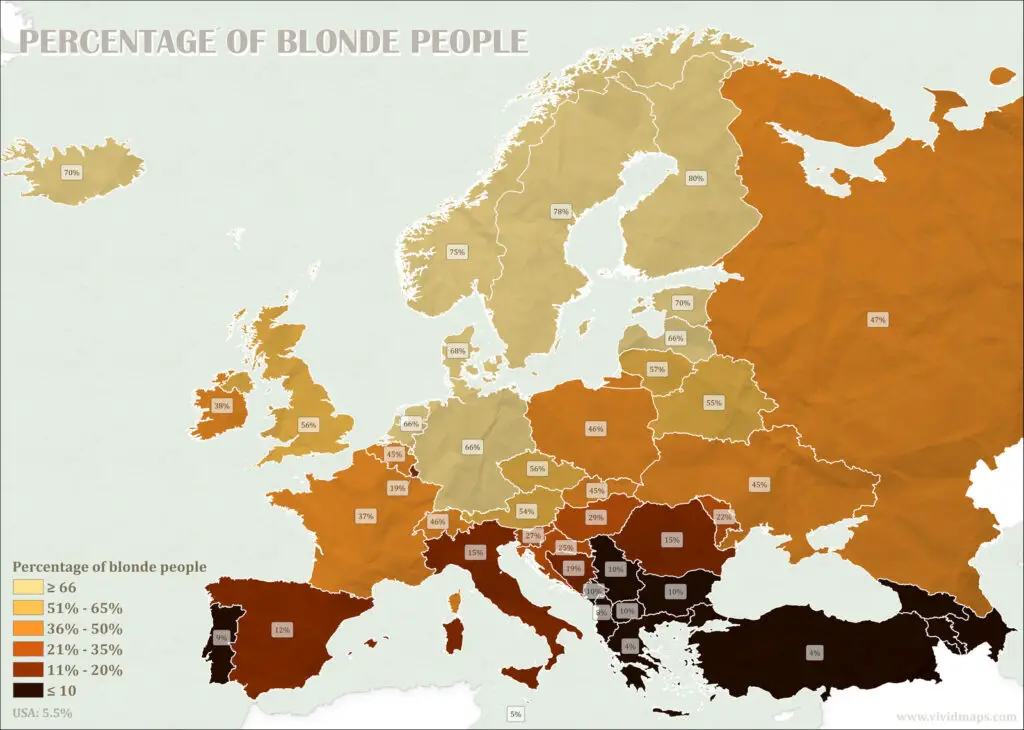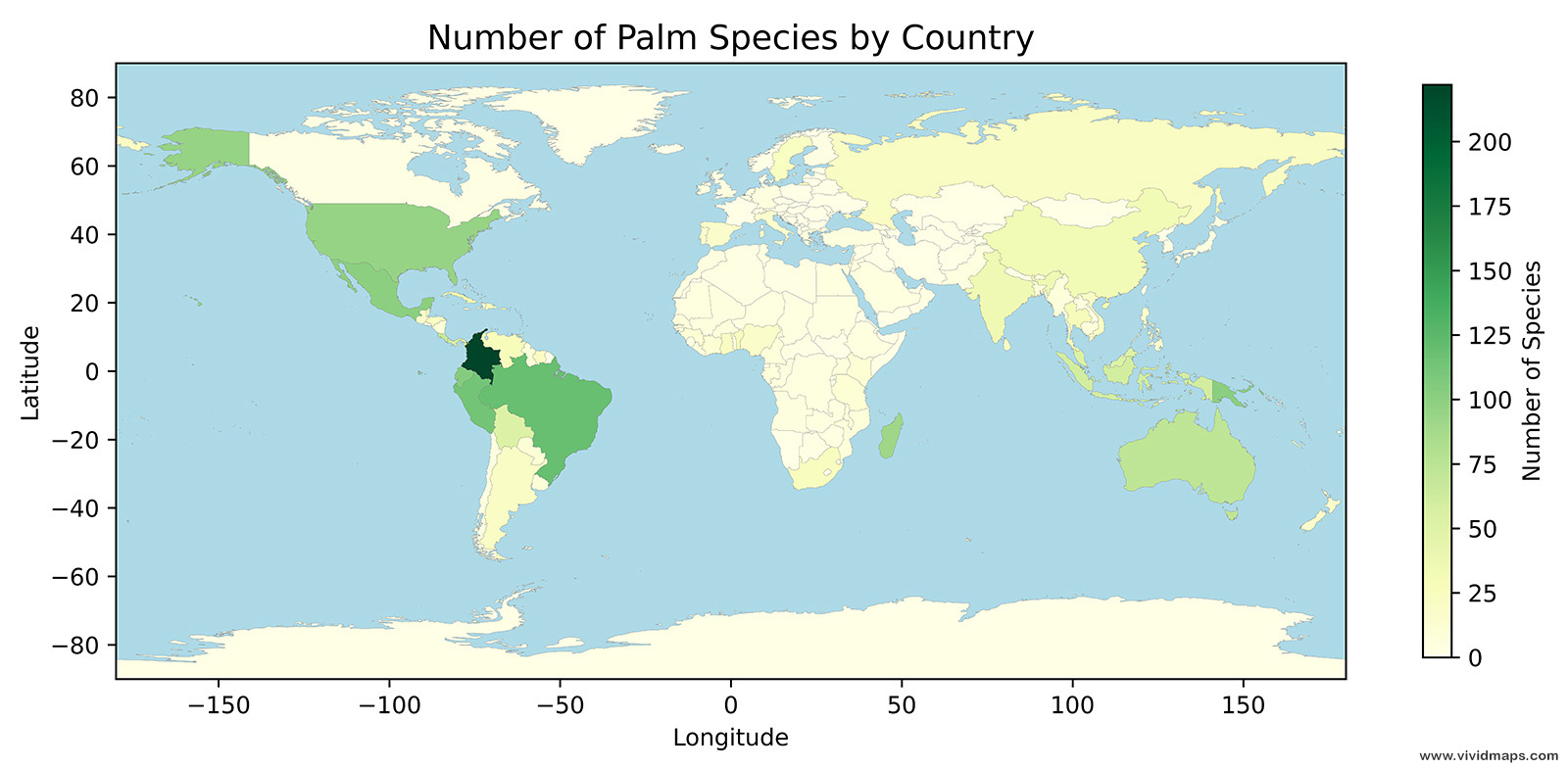Where Is Blonde Hair Most Common in Europe? A Look at the Map
Blonde hair has long been associated with Northern Europe, but just how common is it across the continent? This map reveals the regional distribution of blonde-haired individuals, showing fascinating trends from the Arctic Circle down to the Mediterranean.

The animated version of this map you can find here.
Where Is Blonde Hair Most Prevalent?
The highest concentration of blonde hair is found in Scandinavia and the Baltic region, with some of the most striking numbers in:
- Finland – Around 80% of Finns have naturally blonde hair, and an incredible 89% have blue eyes.
- Sweden & Norway – A stronghold of light hair, with 75–78% of the population being blonde.
- Estonia & Iceland – Both have around 70% of people with blonde hair, and Icelanders also boast nearly 90% blue-eyed individuals.
As you travel southward, the percentage of natural blondes gradually declines.
- Germany & Poland – About 50–60% of the population has blonde hair.
- France & Northern Italy – Around 20–30% of people here have lighter hair shades.
- Spain, Greece & Southern Italy – Only 10–15% of the population has naturally blonde hair.
Why Is Blonde Hair So Common in Northern Europe?
The dominance of blonde hair in Northern Europe comes down to genetics, evolution, and historical migration patterns. The MC1R gene, which is linked to lighter hair, is far more prevalent among populations in this region. Scientists suggest several reasons for this:
- Low Sunlight Adaptation – Lighter hair (along with fair skin) allows for better Vitamin D production in northern climates, where sunlight is weaker.
- Genetic Drift & Isolation – Scandinavian populations remained relatively isolated for centuries, allowing these traits to become more concentrated.
- Sexual Selection – Some theories suggest that lighter hair and eye colors stood out as unique features, leading to evolutionary preferences over time.
What About Red Hair?
Interestingly, while blonde hair dominates the north, Scotland, and Ireland are home to the highest percentage of red-haired individuals. In Scotland, about 13% of the population has red hair, and nearly 40% carry the gene!
Blonde Hair: A Fading Trait?
Natural blonde hair often darkens with age, and these percentages represent adult populations. Additionally, with increasing global travel and the mixing of populations, some researchers believe that natural blonde hair could become less common over time. However, Northern Europe is still likely to remain the global epicenter of blondes for generations to come.
Have you noticed these hair color trends while traveling in Europe? Maybe you’ve seen surprising differences between regions? Let’s chat in the comments!
Additional Resources
Interested in exploring more maps of Europe? These detailed maps are available on Amazon (Note: The following are affiliate links that will take you to Amazon’s website):








